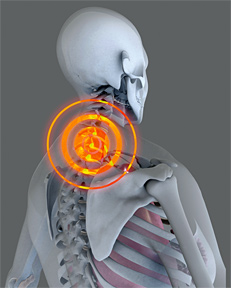Dealing With a Pain in the Neck
Have You Tried Training Your Deep Neck Muscles?
By Dr. Jasper Sidhu
If you're suffering from chronic neck pain, you definitely know it: Chronic neck pain is pain in the neck that lasts (off and on) for more than six months, and an estimated seven in 10 adults develop it at some point in their lives. The big question, of course, is what can you do about it? Fortunately, neck pain is usually treated effectively by chiropractors. In fact, recent guidelines on neck pain point to spinal manipulation as a recommended treatment option. It's also important to recognize that another recommendation is exercise, many of which can be performed at home. Let's take a look at how the neck muscles relate to neck pain and what you can do about it.
What do you think of when I tell you I'm going to give you exercises for your neck pain? Do you expect advice on general stretches or instruction sheets with simple exercises? Perhaps you have a vision of weights attached to your head like the weight-lifters you may have seen in an old movie. The reality is that neck exercises can be gentle and easy to do, and don't usually require a lot of equipment or time. It begins by understanding why exercises are important for relieving neck pain in the first place.
In general, there is no one cause of neck pain that applies to every patient. If you have chronic neck pain, you may have received a diagnosis of disc herniation, whiplash, strain, sprain or something else. Regardless, most of these conditions have one thing in common: Certain muscles are affected, and these are the muscles we need to target before progressing to more challenging exercises or activities.
 There are certain muscles in the neck that are designed to help us maintain our normal and healthy curve of the spine. In addition, these muscles are designed to hold our head up all day. The technical names of these muscles are the longus capitus and longus colli, more commonly known as the deep neck flexors. They are the muscles that attach to the front of your spine. Because they're located deep in the front of the neck, we often ignore them. As they say, "Out of sight, out of mind," but they're important muscles to consider whenever you're suffering from neck pain.
There are certain muscles in the neck that are designed to help us maintain our normal and healthy curve of the spine. In addition, these muscles are designed to hold our head up all day. The technical names of these muscles are the longus capitus and longus colli, more commonly known as the deep neck flexors. They are the muscles that attach to the front of your spine. Because they're located deep in the front of the neck, we often ignore them. As they say, "Out of sight, out of mind," but they're important muscles to consider whenever you're suffering from neck pain.
In people with chronic neck pain, these muscles are often fatigued a lot quicker than in people without neck pain. That means other muscles pick up the slack and begin working harder. The muscles that begin working harder are the ones we generally end up stretching. Have you ever noticed that when you stretch stiff muscles, they feel good for a short period of time, only to get tight again? The thing is, if you don't address the other muscles, the ones that get fatigued and gradually stop working, then your stretching program will not work as well. All these muscles need to be in "balance."
The best way to see if your deep neck flexors fatigue is to try and lift your head off the ground when you are lying down. The technique is simple: Simply tuck your chin in to your chest and lift your head off the ground, and then attempt to hold it there for 10 seconds. If the neck begins shaking, or your chin is unable to stay tucked in, your deep flexors are fatigued and need to be addressed.

